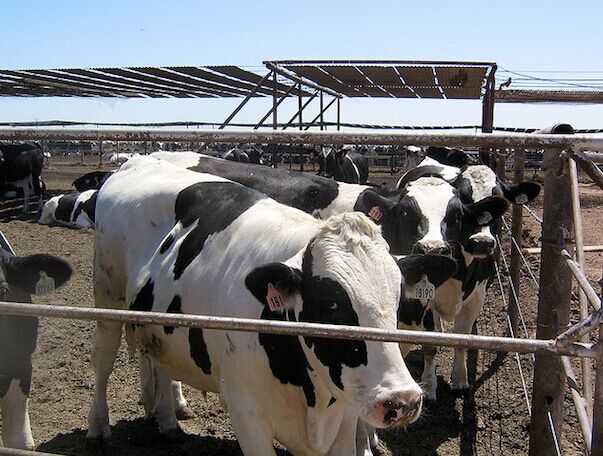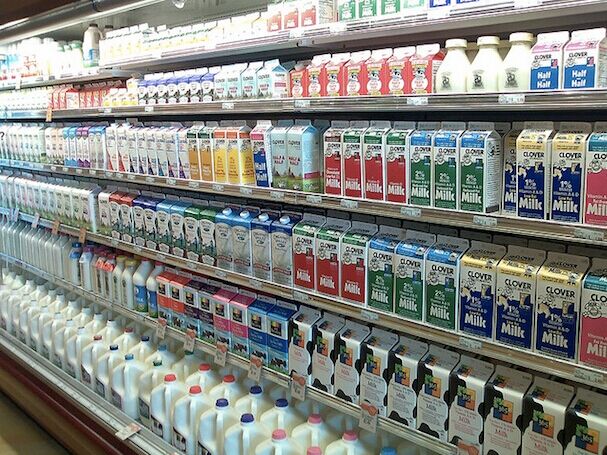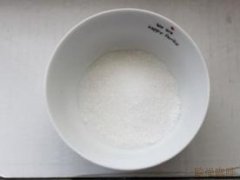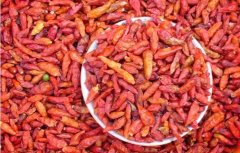How to choose the most suitable milk to add coffee?
Milk and coffee are obviously good friends: since the advent of coffee, they have been paired together for practical and preferred reasons. The former is because of the increased calories and nutrition, while the latter is because, well, milk and coffee taste great together.)
Today, however, anyone who buys milk knows that every freezer on the market is packed with bottles and cartons with red, blue and yellow caps-not to mention Happy Mavericks cartoons and certificate labels. How should people choose?
Here are some tips to learn as much as you can about the milk you drink and even the coffee you drink every day.
The source of animals
It seems strange to consider what kind of animal milk is used to make your coffee. after all, milk has completely occupied the coffee shop, and most of us in North America have been drinking milk and dipping it in cookies since childhood.
But after you try and investigate, you can choose according to your taste and preference. You don't have to choose milk automatically. Alas, with so many kinds of mammal milk around the world, you may find one more complex, smoother and more delicious than milk. To explore the dairy road, my dairy adventure!

Milk is the oldest backup. According to the following factors, such as the proportion of milk fat and the conditions of raising cattle, the sweetness and texture of milk match seamlessly, neither too thick nor too light. And milk is cheap, common and familiar-which may or may not be its advantage.
Goat's milk is almost salty, grassy and very full-bodied, which may appeal to Greek yogurt fans. Without the sweetness of the milk, goat's milk is best served with roasted coffee specially designed for sugar browning (medium roasting, neither very deep nor very shallow).
Buffalo milk is really a good thing if you can find it. This giant animal can produce the most fatty milk, and although in large amounts it is rich in texture enough to make the taste too strong, it can produce the perfect cup of coffee with the right amount, allowing you to indulge a little in the morning. The taste is smooth and sweet, not everyone likes it, but it must be worth a try (maybe only once: it's really expensive)
Milk fat
The fat content in milk can change the texture and taste of the liquid.
Homogenization, first of all, is a process in which fat already suspended in milk splits into smaller particles by heating and filtering, which makes the fat more evenly distributed in the liquid environment. The higher the fat content of the milk itself, the richer the taste after homogenization.
Side note: in the United States, most retail milk is skimmed at harvest. Once the milk is separated and divided into different types and the following "grades", the milk fat is re-injected into the milk to meet various special requirements in accordance with USDA regulations. Most of them are homogenized and pasteurized before the boxes are transported.

Whole milk, although its name sounds like "intact" or "extruded directly from cattle", actually contains only about 3.25% of the minimum milk fat, although most manufacturers will achieve 4% to achieve the best taste. This is the most common and perhaps the best milk behind the espresso bar, because making coffee with no more or less cream can achieve the ideal balance between taste and texture. It is slippery without making the drink more like a snack, so when you don't make a special request, the coffee shop uses whole milk by default.
Low-fat milk with a milk fat content of 1% or 2% is not significantly different in taste or taste, but it is a bit thin in the cup by comparison. Usually if there is no such milk in a coffee shop, baristas will mix whole milk and skim milk into roughly low-fat milk, but this is not ideal. Low-fat milk that baristas mix by hand is often unstable and is either too thin or too thick compared to real bottled low-fat milk. But in most cases, latte drinkers don't know the difference.
Skim milk, as the name suggests, contains no milk fat at all-giving it a bit of a blue hue, because only short-wavelength light can penetrate casein particles, which are the main components of the milk (fat balls can also refract long-wavelength light, and the more colors are dispersed, the whiter the milk looks). Less fat makes milk taste sweeter, believe it or not, and less sticky fat doesn't cover the upper jaw as tightly as fat milk. After steaming, this milk can make a dry and dense foam, but in any case it will make the taste of espresso too prominent. Pouring it into the brewed coffee will make the whole cup look gray and will not increase the concentration much, but it will still be sweeter than other milk.
Cream is generally a slightly different kind, and there are many kinds to choose from. Light cream, half-fat cream, thick cream, whipped cream-what's the difference? It is mainly the difference of milk fat content.
Semi-fat cream has the lowest fat content in cream, only 12% and has a sweet butter flavor. Compared to light cream (20%), thick cream (38%) and whipped cream (38% usually mixed with air), semi-fat cream is actually a low-calorie drink-which is good because people tend to pour more into the cup to achieve the desired slippery texture and sweetness. It's delicious with a little bit of dripping coffee, and it's almost tangled as the base for an espresso drink with milk-it's kind of like making a latte with warm cream cheese. They taste more like custard or melted ice cream than pure milk. Besides, it sounds good in theory, but if there are too many good things, it will pass.
Pasture
When we talk about taste, does it matter if we come from organic or traditional pastures? Well, the point is: the taste is subjective. Are grass-fed and herding cattle tastier than those raised in industry? Neither of the two feeding methods is enough to control in these situations to really give me enough strong evidence: to convince me, you have to use different methods to raise two cows in a common, regulated environment-which is obviously not going to happen!
In my experience, however, the type, size, and style of pastures do seem to make a discernible difference.
Traditional milk usually comes from large dairy farms with central processing plants, hundreds of cows, if not thousands, usually raised in enclosed sheds, milk production and feeding turns, and the life is organized and regular. These cattle have never eaten fresh green plants, but instead have cereal meals, perhaps supplemented with dried plants or other nutrients. The final results can be consistent throughout the year.
Organic milk usually comes from smaller farms, which are often unified into cooperative farms or producers' cooperatives, or large entities based mainly in a single company in the Midwest and West Coast. Cattle are required to graze at least part of the year and to regularly feed fresh plants from the season. There are different practices, so it is worth doing a little survey on the brands you are considering! Grazing dairies may face product instability due to seasonal changes in diet, but this is usually the case with small dairies.
However, from a preference point of view, only your taste buds have the most say. Taste, compare, and then taste.
Freshness
Like coffee, fresh is best: but unlike coffee, stale milk can really make you uncomfortable. Like our preferences, bacteria and other microbes love milk: it contains sugar and other nutrients and is the perfect food in the world. Oh, it's also delicious. Even crawling insects know that.
Over time, milk is broken down and "digested" by microbes before we drink it. Pasteurization slows the process by controlling the temperature to kill and stop harmful bacteria from reproducing, but the effect lasts too long. When most of the essence of milk-protein and lactose-is fully broken down by these micro-invaders, no matter what you do with it, the milk is no longer delicious or healthy. (this is why only fresh milk can ferment; bad milk is not the same thing as deliberately fermented yogurt even if it is kept in the refrigerator for a month.)

What is the moral of the story? On my father's advice, always look behind rows of boxed or bottled milk for the ones with the longest expiration date. In some places (including New York City), milk needs to be affixed with "in. The former sales "and" in. The label "before drinking"-the former is allowed to drink three to four days after that date, but the latter should not be messed up.
What kind of milk do you like to add to your coffee?
Important Notice :
前街咖啡 FrontStreet Coffee has moved to new addredd:
FrontStreet Coffee Address: 315,Donghua East Road,GuangZhou
Tel:020 38364473
- Prev

Basic knowledge of Coffee Milk making Top delicious Fine Coffee
Coffee (250g), sugar (15g), gelatin (5g), cold water (25g), milk (100g, or more such as 200g). Make 250 grams of coffee, or just brew it with instant coffee. Taste whatever. The picture shows Gilding and granulated sugar. two。 Put gelatin and sugar in a small bowl, add cold water and stir well. 3. The coffee was poured into the pot, but
- Next

Is the coffee spicy, too? How about a cup of spicy coffee?
When it comes to coffee, people will think of Blue Mountains, Colombia, Italy, etc., no matter how rich or weak the taste is, mellow and smooth is what they have in common. Recently, in Chongqing, the spicy capital, there has been a kind of spicy coffee. Is coffee still called coffee when it turns spicy? How to get spicy? It turned out that when a coffee shop was mixing coffee, it added red millet and spicy young ones.
Related
- Detailed explanation of Jadeite planting Land in Panamanian Jadeite Manor introduction to the grading system of Jadeite competitive bidding, Red bid, Green bid and Rose Summer
- Story of Coffee planting in Brenka region of Costa Rica Stonehenge Manor anaerobic heavy honey treatment of flavor mouth
- What's on the barrel of Blue Mountain Coffee beans?
- Can American coffee also pull flowers? How to use hot American style to pull out a good-looking pattern?
- Can you make a cold extract with coffee beans? What is the right proportion for cold-extracted coffee formula?
- Indonesian PWN Gold Mandrine Coffee Origin Features Flavor How to Chong? Mandolin coffee is American.
- A brief introduction to the flavor characteristics of Brazilian yellow bourbon coffee beans
- What is the effect of different water quality on the flavor of cold-extracted coffee? What kind of water is best for brewing coffee?
- Why do you think of Rose Summer whenever you mention Panamanian coffee?
- Introduction to the characteristics of authentic blue mountain coffee bean producing areas? What is the CIB Coffee Authority in Jamaica?

